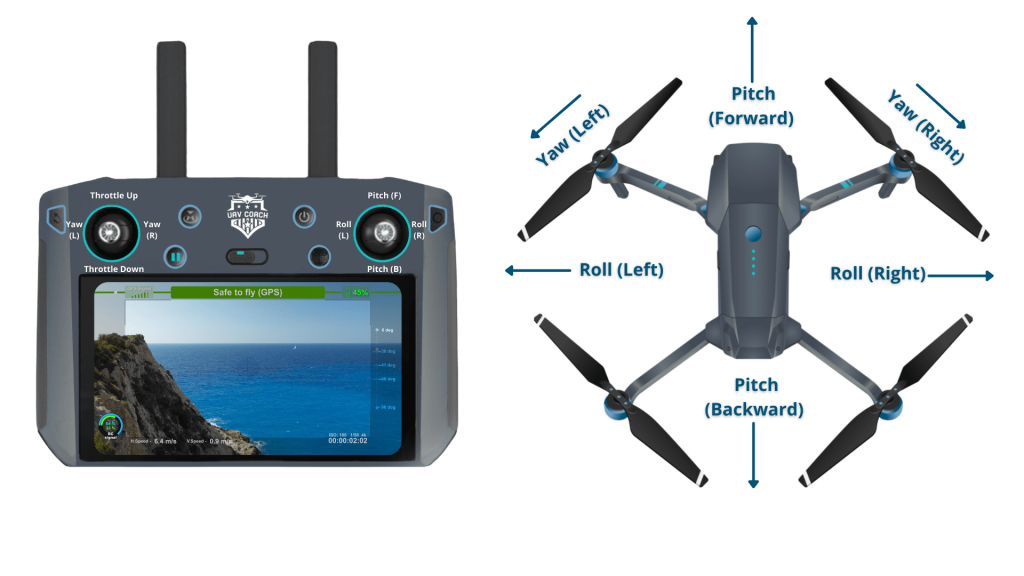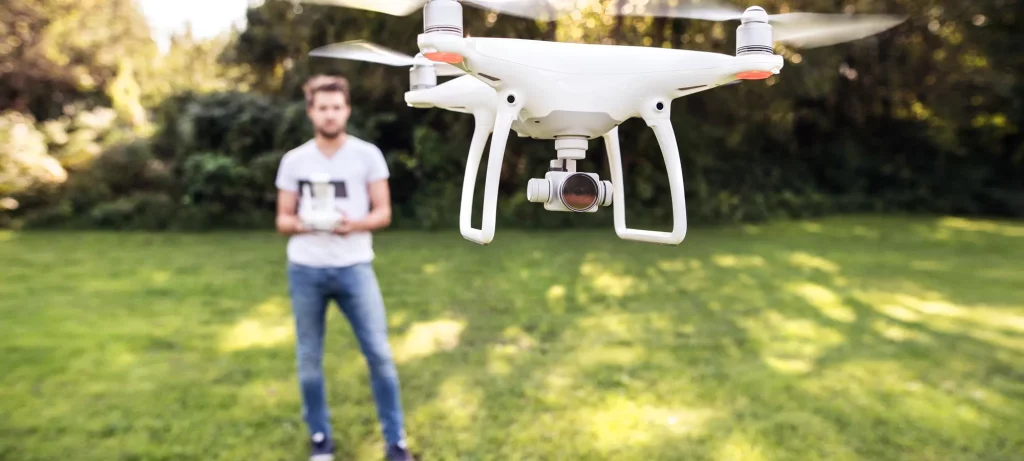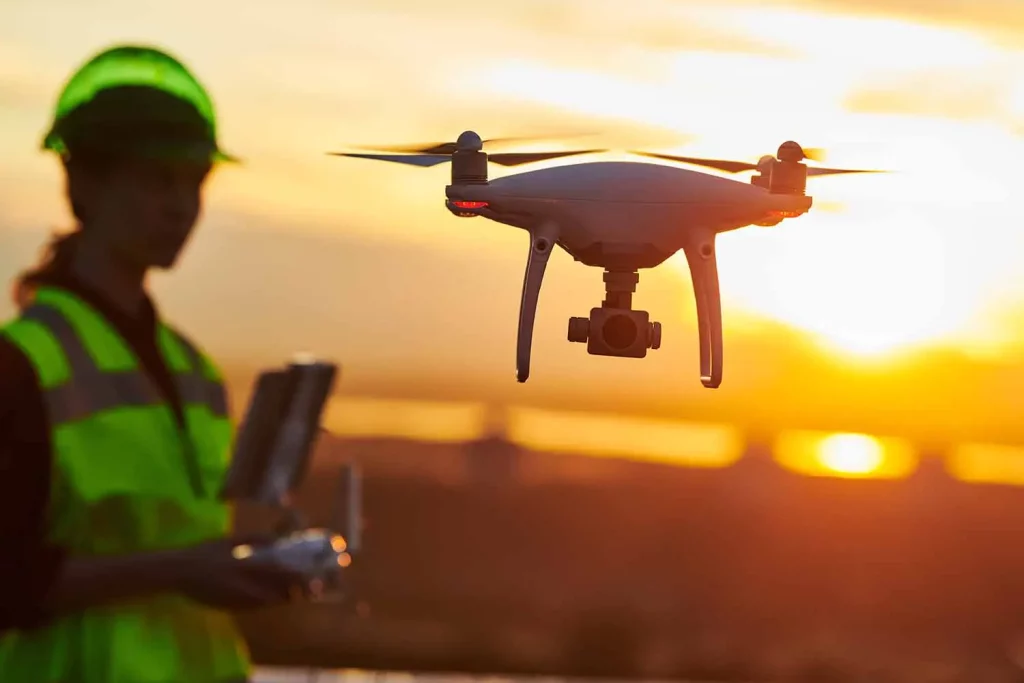Are you a beginner interested in learning how to fly a drone? If so, then you’ve come to the right place! This blog post will provide a simple guide on how to fly a drone for beginners. You’ll learn the basics of drone flying, such as how to pick the suitable drone, the different types of drones available, and the necessary steps to get started. We’ll also give you some tips and tricks to help make your first drone flight successful. So, if you’re ready to start, let’s dive right in!
Read the Manual
Before you take off with your new drone, it is essential to make sure that you have read the manual thoroughly. The manual will provide important safety information and instructions on properly using the drone. It is also a good idea to keep the manual handy while flying as it can be used as a reference.


It is also important to read any additional materials that come with the drone. This may include information about the battery, software updates, and other important safety information. It may also consist of detailed instructions on controlling the drone, including the best practices for takeoff and landing.
If there is something in the manual that you don’t understand, don’t be afraid to reach out to the manufacturer for help. It is better to ask questions now than run into trouble later. Once you are comfortable with all of the information provided in the manual, you are ready to take your first flight!
Check the Regulations
Before you get started flying a drone, it’s important to make sure that you are aware of the local laws and regulations surrounding drone operation. Countries, states, and cities have different rules about where and how drones can be flown.
In the United States, the Federal Aviation Administration (FAA) regulates the use of drones. The FAA requires all drones that weigh more than .55 lbs to be registered with the FAA before they can be flown. This includes recreational drones as well as those used for commercial purposes.
In addition to registering your drone with the FAA, you should also familiarize yourself with the airspace restrictions in your area. Drones cannot be flown near airports, military bases, or other restricted areas. Be sure to check with your local aviation authority for specific regulations in your place.
You should also check to see if there are local ordinances regarding drone operation. Many cities and towns have laws governing drone use that may restrict where and when they can be flown.
It’s essential to ensure you comply with all relevant regulations when flying a drone. Ignoring them could lead to severe consequences, including fines or jail time. Make sure you know the rules before taking to the sky.
Choose the Right Drone
When it comes to flying drones, choosing the right one is essential. The size, features and price of your drone can determine the level of success you have in mastering the skill of drone flying. Here are some essential points to consider when choosing a drone:
Also Read: Top 5 Drones You Need to Know About in 2023
The drone’s size matters because larger drones can hold bigger payloads and fly longer distances. Smaller drones are more maneuverable and easier to control, making them perfect for beginners. If you’re just starting, opt for a smaller drone that won’t be too intimidating.
The cost of drones can vary greatly, depending on the type and features of the drone. You don’t need to invest in an expensive drone immediately; most beginners should look for a budget-friendly option that still offers basic features.
Drones come with various features, from cameras to obstacle avoidance systems. Look for a drone with basic features that will help you practice your skills without breaking the bank. Look for features like altitude hold and return home that can make your flights more enjoyable and safe.
Look for drones with failsafe return home or emergency stop to ensure your drone stays safe in case of any unexpected issues. Most importantly, check the FAA regulations on drone operation and always fly responsibly.
By following these tips, you can easily find the right drone that meets all your needs and requirements. With the right drone, you can now take your first steps in mastering the art of drone flying.
Get Familiar with the Controls
Learning to fly a drone is daunting, but becoming familiar with the controls will help you get started quickly. Most drones have four main controls: yaw, roll, pitch, and throttle. Yaw controls the rotation of the drone on its vertical axis, roll controls the course of the drone on its horizontal axis, pitch controls the angle of the drone’s movement, and throttle controls the altitude.
In addition to these four main controls, some drones have other controls, such as camera settings, autopilot modes, and return-to-home features. It is important to understand the purpose of each of these features before taking your drone out for a spin.
To become familiar with the controls of your drone, it is best to practice on a flat surface like a table or desk. This allows you to visualize better how each control affects the drone’s flight path. Additionally, most drones have an instruction manual outlining each button’s specific functions and setting. Make sure to take the time to read through this manual so that you know all the available features and how to operate them properly.
Once you are comfortable with the basic controls of your drone, you can move onto more complex maneuvers like flips, rolls, and aerial stunts. This should only be attempted after mastering the basic controls and understanding drone flight laws and regulations. Taking time to learn the basics will help ensure safe and successful flights.
Take Off and Landing

Taking off and landing your drone can be tricky, especially if it’s your first time flying. This section will discuss the best practices for taking off and landing your drone.
When taking off, you should make sure that you have checked the conditions for flying and are in a safe space. Make sure to start at a low altitude of 1 to 5 meters away from any obstacles or people. Always keep your hands off the controls until your drone has taken off.
When landing, you should always keep your eyes on the drone and your hands on the controls. Slow down the speed of your drone and carefully lower it to the ground. Ensure your drone is completely powered off before removing the battery or making other adjustments.
By following these take off and landing instructions, you can ensure that you fly your drone safely and successfully. Always be aware of your surroundings and adhere to all safety regulations when flying your drone.
Know Your Limits
When flying a drone, it’s important to remember to always stay within your limits. It’s easy to get caught up in the excitement of flying a drone and forget about safety precautions. It’s important to remember that it’s still an aircraft, and you should always be aware of your surroundings and the airspace regulations.

First, always pay attention to the weather. High winds, rain, or snow can all cause dangerous situations for your drone. Check the forecast before taking off and land if the weather turns nasty.
Second, always fly in a safe area and away from other people and objects. Avoid flying over populated areas, airports, or military installations. Avoid no-fly zones such as schools, prisons, or national parks. Flying over these areas can get you in serious trouble with the law.
Third, respect privacy laws and avoid taking pictures or videos of people without their permission. Depending on where you live, strict regulations may exist against taking photographs or videos of people without their consent. Always ask permission before you take pictures or videos of someone.
Finally, know when to call it quits. As with any activity, it’s important to know when you are too tired or distracted to continue safely. If you’re tired or unable to concentrate, it’s best to put your drone away and try again another day.
Following these tips and staying within your limits can ensure a safe and enjoyable flying experience with your drone. Always be responsible when flying a drone and follow all local laws and regulations.

